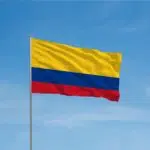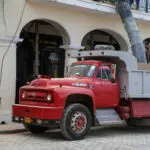Colombian Independence Day is celebrated on July 20. When the date falls on a weekend, it’s not moved to a weekday. To rule the region independently from Spain’s colonial era, the ‘Junta de Santa Fe’ began in Santa Fe de Bogota, the viceroyalty’s capital. The event sparked independence movements throughout Latin America, resulting in a decade-long rebellion that culminated in the establishment of the Republic of Gran Colombia, including present-day Colombia, mainland Ecuador, Panama, Venezuela, parts of northern Peru, and northwestern Brazil. Gran Colombia disintegrated in 1831; however, it was among the most powerful countries in the Western Hemisphere. It influenced the political development of new Latin American states.
History of Colombia Independence Day
Spanish explorers arrived in Colombia in 1499. They established their first permanent settlement in 1510. Resentment among the colonies rose under King Charles III’s rule (1759–1788) as the Spanish demanded that the colonies only trade with Spain, restricting their ability to develop. Spanish taxation grew because they supported the U.S. during the American War of Independence, which sparked a series of ineffective revolts.
Criollos (natives born of Spanish heritage) who desired independence grabbed the opportunity after the Napoleonic wars in Europe. There were uprisings and declarations of juntas (Military governments) in the months preceding July 20, and similar occurrences occurred in Bogota. The Criollos devised a plan to ensure that the rebellion began. They intended to enrage José González Llorente, a well-known local businessman, to agitate the community. They went to see him on the morning of July 20; they fully expected him to say no when they asked to borrow a flowerpot to offer to a fellow Criollo. It is not entirely clear how he declined if the flowerpot got shattered and who was responsible for it. The visit was effective and fuelled the riots in Bogota; the People’s Junta got established that afternoon. The location of the flowerpot incident, Llorente’s house in Bogota, is now the “July 20 Museum” and a well-liked destination on July 20.
On this day, people eat Bandeja Paisa, a popular national dish comprising minced meat, white rice, red beans, fried egg, plantains, pork, and avocado. This dish gets served on a platter because of its size. People assemble to play the game Tejo, in which players toss metal disks towards explosive targets while listening to traditional folk music. People believe that Tejo began with the central-Colombian indigenous groups.
Colombia Independence Day timeline
The Spanish first land in Colombia.
The Spanish found the first permanent settlement in Colombia.
King Charles III's administration witnesses growing resentment among the colonies as Spanish taxation increases.
On July 20, Colombia formally declares its independence.
Colombia Independence Day FAQs
Who is the most famous Colombian?
The most prominent Colombian is Juan Manuel Santos. He is a former president that won the Nobel Peace Prize in 2016 for ending the nation’s civil war of more than 50 years.
What is Colombia known for?
Colombia is well-known for its arepas and specialty coffee, as well as its beautiful landscapes and culturally diverse heritage of art, music, and theater.
What is the national dish of Colombia?
Rice, minced meat, red beans, chorizo, arepa, a fried egg, chicharron (fried pork skin), morcilla (black sausage), sweet plantain, and a slice of avocado are all ingredients of the national meal known as Bandeja Paisa.
How to Observe Colombia Independence Day
Visit Llorente’s house
You can enjoy the experience of visiting Llorente’s house in Bogota. This museum is the scene of the flowerpot incident.
Prepare the traditional food
Prepare traditional Colombian foods and beverages, such as Bandeja Paisa, Ajaico, or agua de panela. It is a fun way to celebrate Colombian Independence Day.
Paint your face
Colombians exhibit national pride by painting their faces yellow, blue, and red. They also wear their national team's football jersey.
5 Facts About Colombia
It’s a biodiverse country
Colombia is the world's second most biodiverse country and is one of only 17 megadiverse countries.
There are many species
It has the biggest diversity of species on the entire planet, including more bird species than all of Europe and North America put together.
It has an official name
Colombia's official name is the Republic of Colombia, derived from the surname of the explorer Christopher Columbus.
Its coastlines are unique
Colombia is the only South American country with coastlines in the Pacific and Caribbean oceans.
Its National Anthem is played daily
Every day at 6 a.m. and 6 p.m., radio and public television in Colombia play the national anthem.
Why Colombia Independence Day is Important
It has the Liquid Rainbow
Colombia is the home of the Cano Cristales, also known as the ‘River of Five Colors’ or ‘Liquid Rainbow.’ It is in the Meta province of Serrania de la Macarena. From the end of July through November, the river's bed changes color from yellow to green to blue to black to red.
Age is valued
The older a person gets, the stronger their voice becomes. Elders are highly-respected throughout the country.
It has the highest coastal mountain range
With a height of 13,000 meters, Colombia's Sierra Nevada de Santa Marta is the tallest coastal mountain range in the world. It is also a key landmark for the nation.
Colombia Independence Day dates
| Year | Date | Day |
|---|---|---|
| 2025 | July 20 | Sunday |
| 2026 | July 20 | Monday |
| 2027 | July 20 | Tuesday |
| 2028 | July 20 | Thursday |
| 2029 | July 20 | Friday |
















